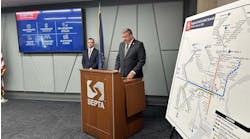A colleague recently posed the question, “Why does it appear that schedulers do not fully utilize the scheduling software packages and all of the associated features purchased for them?” As simple as that question is, there are multiple answers as diverse as the scheduling process itself. An often-repeated explanation is the lack of scheduling knowledge required to leverage the software to create a viable solution. If you have ever heard the word “powerful” associated with a software, then complicated may also accompany it. Software developers may design packages with an information technology (IT) level of understanding rather than the needs of the end user. If it is too difficult to use, not understood or not intuitive, then it will be avoided and underutilized. An additional reason less discussed and understood is the fact that not all scheduling software tools are suited for all operations. The best software package should be based on the agency’s needs with the ability to improve solutions and eliminate manual work as much as possible.
Software is a huge investment and if you pick the wrong one, or the wrong features within it, the scheduler and agency might be stuck for the long haul. Once an agency invests into this resource, it is a rare occurrence to actively change a software package. To illustrate this point, one agency, which has a single line rail operation, does not use its purchased software because it does not meet its daily scheduling needs. The result is a large waste of money and efficiency for the agency that made the purchase without understanding the requirements of the operation.
Anyone involved with the selection process such as the scheduler, IT, procurement, local department of transportation (DOT) or any other interested parties should be cautious and completely understand the product being purchased. There seems to be a one size fits all mentality among many people in the industry and state governments and nothing can be further from the truth. Software packages range in their ability to deliver a final scheduling solution, as well as providing many supporting reports. Without someone with the ability to ask the right questions in advance, many agencies simply end up with the wrong or, at best, less than optimal product. As many state DOTs try to help smaller agencies by purchasing software in bulk with the notion that ‘one size fits all,’ they may be unintentionally impairing the agency with this line of reasoning.
For instance, can the software runcut eight- and 10-hour runs effectively, and can the parameters be set to make a set amount of each type? Not every agency needs this function, but for those that do, the ability of the software to perform this task is a must. If you are a rail operation, is the software capable of creating separate vehicle and operator blocks to allow for fall back operation when an operator gets off at the end of the line to wait for the next trip? There are many more examples, but the question remains; can the software adequately address the needs of the agency? If the answer is no, you have the wrong tool for your operation. Depending on the skill and understanding of your scheduler, you might never see any changes or improvements for fear that once a service is taken apart i.e., completely re-scheduled, the schedule might never go back together if manual intervention is required.
A second impediment is that software is not always designed with the user in mind and developers may use terminology that may not be familiar to an individual agency. Training can be an issue as well and while a software provider knows their product and how it works, some of that understanding can be lost and misunderstood when trying to apply it to practical solutions tailored to an individual agency. There is typically a week or so of initial training when purchasing new software, but what happens after that can be daunting for someone trying to fully comprehend all the steps required to produce a schedule. Often, there is a need for ongoing support beyond the initial training and, even worse, some schedulers give up and only use a fraction of what they have learned. Provisions for follow-up training and support are critical when procuring a new or updating an existing software package.
Another deterrent are reference manuals provided by software vendors that are not user friendly or tailored to an individual agency. Written manuals that are 400 or 500 pages can often fail to give enough pertinent instruction on how to accomplish some necessary tasks. Perform a search for a topic and you might have as difficult time finding an answer as you do to fix the problem. Other software vendors do not have reference manuals and provide training through videos. We all learn differently and what might seem straightforward, as far as support and reference materials, might need to be reviewed on a deeper level because the inability to understand or get an answer will have a direct impact on how the product is used.
Once the software provider has a contract, there may be accountability issues. Although they should be customer driven, there is no oversight agency holding them accountable and problematic issues may be ongoing. If the decision is finally made to pull out of an agreement, there are costs associated with retraining and a learning curve that will take time to overcome. Depending on the amount of software packages procured to augment the scheduling software, this might be impossible. Some software programs have ongoing problems that the providers do not or possibly cannot address and should be thoroughly investigated during the vetting stage. Good schedulers will find work arounds to get a schedule into production and will probably avoid disturbing that fix again because of the amount of work required. From an end user perspective, some software companies are more responsive than others when there is an issue. If there is lack of trust in the program, some schedulers will revert to doing work manually outside of the very system that is supposed to make work more efficient for them.
Then there are the downstream systems that do not work together well with the scheduling software. Many times, schedules are adjusted to permit interface with another system to work properly. These other systems can include payroll systems, human resource systems and other disciplines. What might be good scheduling practice is completely undone because other systems do not properly interface the information. So, when procuring or updating a scheduling software package, attention needs to be paid to the interface with other Management Information Systems.
At some locations, IT seems to play a bigger role than might be wise. This adds another layer to an already complicated process that can be problematic in resolving issues in a timely manner, as well as working efficiently. This can be a formidable effort because what is needed is the inclusion of someone who understands manual scheduling, with the ability to explain what they are trying to make the software do in a more expedited and efficient manner. At the end of the day, the question has to be, can the scheduler use the package effectively and efficiently?
This is by no means a comprehensive list of why schedulers do not avail themselves of the software that is supposed to assist them and the agency. Hopefully, it demonstrates that there is a need for better understanding and supported mentoring to ensure each agency in not only meeting the needs of its customers but moving the industry forward.

Ed Dornheim | Consultant
Ed Dornheim is expert transit scheduler with decades of experience beginning with the Southeastern Pennsylvania Transportation Authority (SEPTA) as a part-time Traffic Checker. He worked in various roles at SEPTA along with two stints in scheduling ending as a Chief Schedule Maker, as well as working as the Scheduling Manager at Hampton Roads Transit (HRT) and Scheduling and Planning Manager at Lehigh and Northampton Transit Authority (LANTA).
He began consulting in 2015 with various transit agencies across the United States and Canada.


